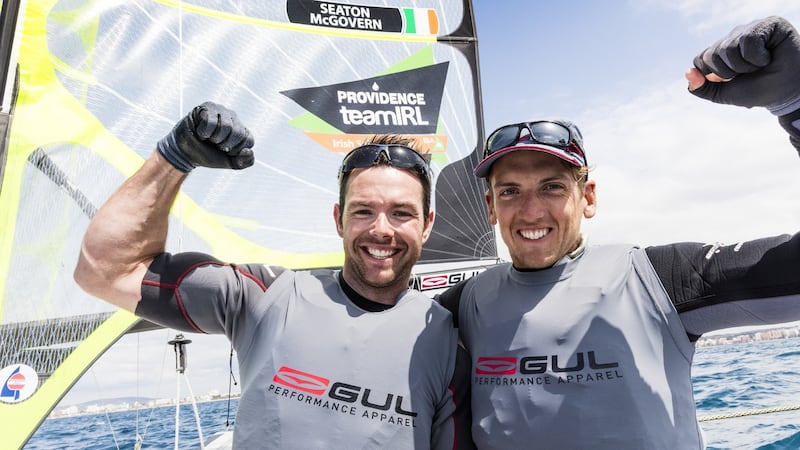As summer beckons following a spell of fine weather in Ireland, dozens of venues around the country will soon start junior sailing programmes catering for thousands of newcomers and regulars to the sport.
Once upon a time, most such courses were provided in a range of dinghy classes, and while for many years the best-known might have been the Mirror with its distinctive red sails, it is the Optimist that has withstood the test of time in terms of popularity and limelight.
The roll-call of former “Oppy” sailors listed at Olympic, Americas Cup and even Volvo Ocean Race levels partly offsets a regular complaint that single-handed sailing is too isolating for young children in their formative years.
Optimist class enthusiasts point to the valuable life skills gained from solo experience, and teamwork from sailing on a fully crewed boat can easily come later.
Still, the pathway to the Irish squad aiming for Olympic level competition has been dominated by the single-handed Optimist transitioning into the three single-handed Laser rigs: 4.7, Radial and Standard.
Dinghy class
Feeding the pathway into the double-handed Senior classes such as the 49er and 49erFX means having a suitable Youth dinghy class above Optimist-age (15), and at present the 420 class in Ireland is dominant.
"Given that we're a small country, we'll never be able to support the full spectrum of [Olympic] classes so we have to pool our resources where we can create squads and make progress," said Rory Fitzpatrick, the Irish Sailing Association's youth and development manager. "The priority I feel for the two-handers is that there is one national fleet operating rather than two half-size fleets."

So, does the 420 class prominence in the youth pathway programme mean the Olympic 470 class should be included in the plans for Tokyo 2020? If a talented 470 pairing did emerge at the right weight combination, Fitzpatrick maintains that they would be supported.
“If somebody performs internationally they’ll definitely get carding support and support from the national federation. But in terms of building squads, we have to focus on a number of classes that world-class performance can come out of by design.”
However, for now, a shift up in gear for the skiff classes now sees the build-up to Tokyo feature at least three serious campaigns, including the now-separated pair of double-Olympic veterans Ryan Seaton and Matt McGovern.
Narrow criteria
But what about those that fall off the pathway programme and don’t reach the narrow criteria that only a handful of the most talented sailors have – what keeps them within the broader sport? Fitzpatrick refutes the notion the pathway programme is simply a talent-spotting process for Olympians and insists that there is a by-product that benefits the wider sport.
“Many will go to college and do team racing there and when they can eventually afford to own a boat themselves, they will be the RS 400 or 200 sailors or keelboat crews. A decent amount them will also become coaches as well, so there are a number of different routes that they tend to go down.”
Fitzpatrick compiled statistics about three years ago on former pathway sailors and what involvement they had currently in sailing and found 96 per cent were still active and/or were actually working in the sport.
“The Olympics isn’t the only thing that sailing offers: there is professional racing, national racing, big boats, small boats . . . it’s really broad. Because these sailors get really good life skills, they become good coaches, good national racers and good big boat sailors if they go down that route too.”













